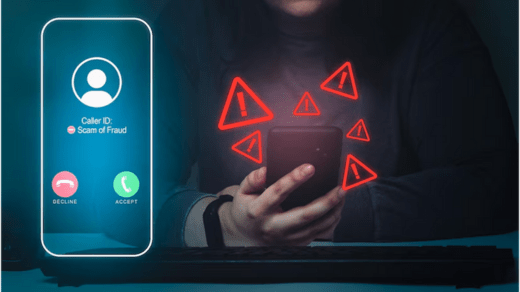Understanding Caller ID Spoofing and How to Fight Back

Ever receive a call from an unknown number, only to answer and hear a robocall or a suspicious sales pitch? You’re not alone. This is caller ID spoofing, a deceptive tactic where scammers manipulate caller ID to display a fake number. This article explores caller ID spoofing, its dangers, and effective strategies to combat these unwanted calls.
How Caller ID Spoofing Works
Caller ID spoofing exploits technology designed to display the phone number of incoming calls. Here’s how it unfolds:
- Tech Tools: Scammers use Voice over Internet Protocol (VoIP) technology to transmit phone calls over the internet. This allows them to manipulate the caller ID information displayed on your phone.
- Deceptive Displays: The scammer can make the caller ID appear like a local number, a trusted organization (like your bank), or even your own phone number to trick you into answering.
- The Bait and Switch: Once you answer, the scammer launches into their scheme, which could involve phishing attempts, telemarketing scams, or even attempts to extract personal information.
Why Spoof? The Deceptive Goals of Scammers
Caller ID spoofing empowers scammers in several ways:
- Increased Trust: A familiar-looking number on caller ID makes the call appear legitimate, increasing the chances of someone answering.
- Urgency and Panic: Local numbers or those mimicking trusted institutions can create a sense of urgency or panic, making you more susceptible to the scammer’s tactics.
- Bypassing Spam Filters: Spoofing allows scammers to bypass spam filters that might block calls from known scam numbers.
Strategies to Combat Spoofed Calls
While caller ID spoofing can be a nuisance, there are steps you can take to protect yourself:
- Don’t Answer Unknown Numbers: Unless you’re expecting a call from an unknown number, it’s best to let it go to voicemail. A legitimate caller will usually leave a message.
- Be Wary of Urgent Requests: Scammers often try to create a sense of urgency to pressure you into making quick decisions. If a call seems urgent, hang up and verify the information directly with the supposed source (bank, credit card company, etc.).
- Never Share Personal Information: Legitimate institutions won’t call you requesting personal information like social security numbers or passwords over the phone.
- Report Spam Calls: First report spam call to the Federal Trade Commission (FTC). This helps track scam activity and potentially identify perpetrators.
Fight Back with Technology
Technology can be your ally in combating spoofed calls:
- Call-Blocking Apps: Several call-blocking apps use various methods to identify and block suspected spam calls. Consider using a reputable call-blocking app on your smartphone.
- Do Not Call Registry: Register your phone number with the National Do Not Call Registry. While not foolproof, this can reduce unwanted telemarketing calls.
- Carrier Blocking Features: Many phone carriers offer built-in features or additional services to block spam calls. Explore the options available with your carrier.
Avoiding Accidental Spoofing
It’s important to note that not all calls with spoofed numbers are scams. Sometimes, legitimate businesses might use spoofing for various reasons:
- Marketing Campaigns: Some marketing campaigns might use spoofed numbers for caller ID consistency across different regions.
- Caller ID Errors: Technical glitches can occasionally cause caller ID to display inaccurate information.
If you encounter a different legal situation, such as needing a family law attorney, don’t hesitate to seek professional guidance.
Conclusion
While caller ID spoofing can be a nuisance, armed with awareness and the strategies outlined above, you can significantly reduce the risk of falling victim to these deceptive tactics. Remember, staying vigilant, not sharing personal information over the phone, and reporting spam calls are crucial steps in protecting yourself.




